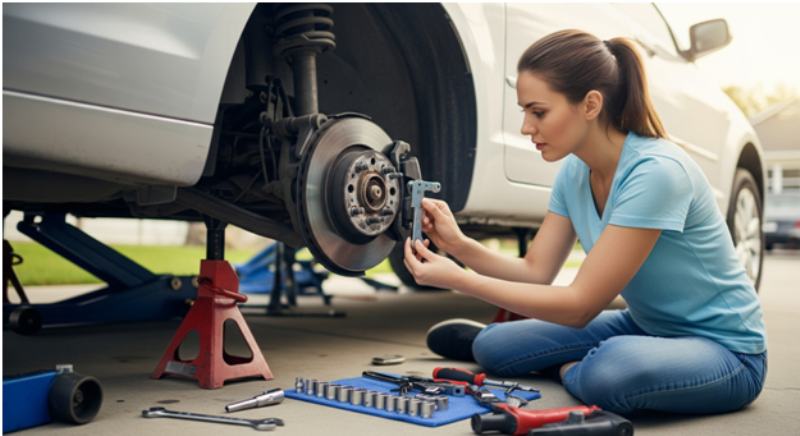
Car’s Thermostat
The thermostat is an essential part of your car’s cooling system. It regulates the flow of coolant to your engine, ensuring that it stays at the correct temperature. If your car is overheating, it may be a sign that your thermostat needs to be replaced. In this article, we will take a look at how to replace your car’s thermostat.
Signs Your Thermostat Needs to be Replaced
Before we dive into how to replace your car’s thermostat, let’s take a look at some of the signs that it needs to be replaced:
- Your car is overheating
- The temperature gauge on your dashboard is reading higher than normal
- Your heater isn’t working properly
- You notice coolant leaking from your car
If you notice any of these signs, it’s important to have your thermostat replaced as soon as possible to prevent further damage to your engine.
Tools You’ll Need
Before you start replacing your car’s thermostat, you’ll need a few tools:
- A new thermostat
- A gasket
- A socket set
- Pliers
- Screwdrivers
- A drain pan
- Coolant
Steps to Replace Your Car’s Thermostat
Here are the steps to replace your car’s thermostat:
1. Drain the coolant
The first step in replacing your car’s thermostat is to drain the coolant from your engine. To do this, place a drain pan underneath your car and locate the drain plug on your radiator. Open the drain plug and allow the coolant to drain into the pan.
2. Remove the old thermostat
Next, you need to locate the thermostat housing on your engine. It will be located near the top of the engine, and it will be connected to the upper radiator hose. Use pliers or a screwdriver to remove the clamps holding the hose in place and then remove the hose from the thermostat housing. Use a socket set to remove the bolts holding the housing in place, and then remove the housing to expose the thermostat.
3. Install the new thermostat
Carefully remove the old thermostat and replace it with the new one. Be sure to place a new gasket between the housing and the engine to ensure a tight seal. Then, replace the housing and the bolts and reattach the upper radiator hose.
4. Refill the coolant
Once you have replaced the thermostat, it’s time to refill the coolant. Use a funnel to pour the coolant back into the radiator, being careful not to overfill it. Check the coolant level using the dipstick and add more coolant if necessary.
5. Test the thermostat
Start your engine and let it run for a few minutes to allow the coolant to circulate. Keep an eye on your temperature gauge to make sure that your engine is staying at the correct temperature. You can also turn on your heater to ensure that it is working properly.
Tips for Replacing Your Car’s Thermostat
Replacing your car’s thermostat can be a relatively simple job, but it’s important to take a few precautions to ensure that it is done correctly. Here are some tips to help you along the way:
1. Use the right tools
Having the right tools on hand will make the job much easier. Make sure you have a socket set, pliers, screwdrivers, and any other tools you may need before you start.
2. Be careful when draining the coolant
Coolant is toxic, so it’s important to handle it with care. Be sure to wear gloves and protective clothing when draining the coolant, and dispose of it properly.
3. Take your time
Replacing your car’s thermostat can take some time, especially if you’re new to the process . Take your time and work slowly, double-checking your work as you go to ensure that everything is done correctly.
4. Choose the right thermostat
There are many different types of thermostats available, so it’s important to choose the right one for your car. Consult your owner’s manual or speak to a mechanic to ensure that you are getting the right part for your vehicle.
5. Consider replacing other parts
While you have your car’s cooling system apart, it may be a good time to replace other parts as well. Your water pump, radiator, and hoses may also need to be replaced if they are worn or damaged.
Replacing your car’s thermostat is an important part of maintaining your vehicle’s cooling system. By following these steps and taking the necessary precautions, you can replace your thermostat safely and effectively. Remember to use the right tools, be careful when draining the coolant, take your time, choose the right thermostat, and consider replacing other parts as well. With these tips in mind, you can keep your car’s cooling system running smoothly and prevent costly damage to your engine.





